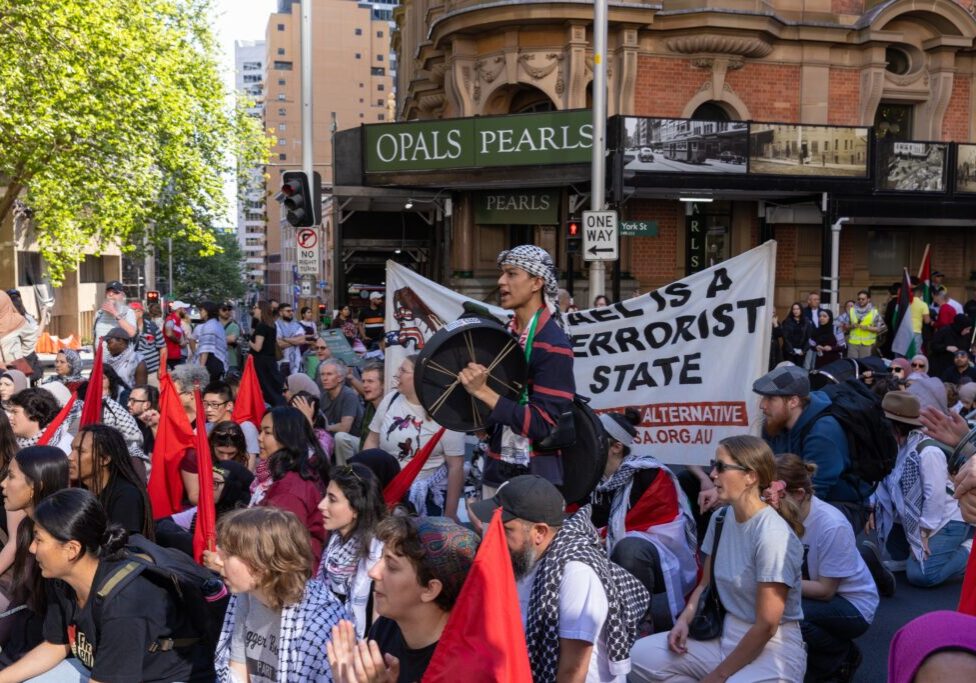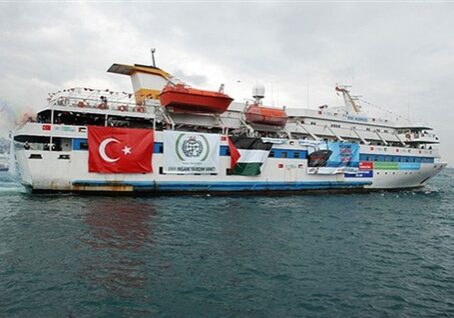Australia/Israel Review
Essay: Moving beyond the slogan
Mar 8, 2017 | Alan Baker

The meaning of “two-states”
Alan Baker
The phrase “two-state solution” is repeated daily by international leaders and organisations. It has become the catch-phrase for anyone advocating resolution of the Israeli-Palestinian dispute.
However, the phrase is repeated without a full awareness of its history or of the practical aspects of its implementation in the realities of the Israeli-Palestinian dispute.
Following are the pertinent points clarifying the real meaning of the two-state resolution:
The formal peace process documentation, including UN Security Council Resolutions 242 (1967) and 338 (1973), as well as the Oslo Accords and related documents signed by Israel and the PLO (1993-9), make no reference to a two-state solution and leave the issue of the final, permanent status of the territories to be negotiated between them.
By the same token, PLO Chairman Arafat committed the Palestinians, in his letter to Israel Prime Minister Rabin dated 9 September 1993, according to which “all outstanding issues relating to permanent status will be resolved through negotiation.”
Prime Minister Yitzhak Rabin’s vision of the permanent status, as stated in his last speech to the Knesset in October 1995, referred to the establishment of “a Palestinian entity which will be a home to most of the Palestinian residents living in the Gaza Strip and the West Bank.” He added that the entity would be “less than a state.”
The Clinton Parameters (2000), in referring to a “two-state approach,” specifically referred to a “demilitarised Palestinian state” with limited sovereignty, as the “homeland of the Palestinian people” together with the State of Israel as the “homeland of the Jewish people.”
The UN Security Council, in the preamble to its Resolution 1397 (2002) reaffirmed the necessity, set out in its previous Resolution 242 (1967), for “secure and recognised boundaries.” In referring to its “vision of a region where two states, Israel and Palestine, live side-by-side within secure and recognised boundaries,” the assumption was that borders need to be negotiated, and the 1967 lines cannot be considered international borders.
US President George W. Bush in his 2002 vision of “two states, living side-by-side in peace and security” also stressed the necessity for a Palestinian state to fight terror and form a new and different Palestinian leadership.
The 2003 “Performance-Based Roadmap to a Permanent Two-State Solution to the Israeli-Palestinian Conflict” referred to “an independent, democratic and viable Palestinian state living side-by-side in peace and security with Israel and its other neighbors.” It envisioned such a state “with provisional borders and attributes of sovereignty,” practising democracy based on tolerance and liberty, and ending all acts of violence and incitement.
Israel’s acceptance of the 2003 Roadmap was on the premise that “the provisional [Palestinian] state will have provisional borders and certain aspects of sovereignty; be fully demilitarised with no military forces…”
President Bush’s letter to Prime Minister Sharon of April 2004, affirming his two-states vision, stressed that “secure and recognised borders” should emerge from negotiations, and not involve a return to the 1949 armistice lines.
In his 2009 speech at Bar-Ilan University, Prime Minister Netanyahu reiterated a vision of two peoples living freely, side-by-side, in amity and mutual respect, each with its own flag, its own national anthem, its own government, and neither threatening the security or survival of the other.
This vision included:
- Palestinian recognition of Israel as the nation state of the Jewish people.
- A demilitarised Palestinian state, including a prohibition on importing missiles, maintaining an army, making pacts and alliances with terror elements, and effective security measures to prevent weapons smuggling into the territory.
- Resolution of the Palestinian refugee problem outside Israel’s borders.
- Limited use of airspace.
Discussion
The term “two-state solution” seems to have become a form of “lingua franca” within the international community, the magic panacea for all the ills of the Israeli-Palestinian dispute and the wider problems of the Middle East.
Not a day goes by without some leading politician, journal, or international body mentioning it as the buzz-word for the ultimate outcome, while at the same time usually accusing Israel – and only Israel – of “undermining the two-state solution.”
The “two-state solution” is presently considered by all the major international actors associated with the Israeli-Palestinian dispute to be the “only way to achieve enduring peace that meets Israeli security needs and Palestinian aspirations for statehood and sovereignty.”
Perusing the most recent spate of formal documentation emanating from international bodies and other sources, one can see that the expression is repeated 15 times in the 1 July 2016 Quartet statement; seven times in Security Council Resolution 2334 of 23 December 2016; 12 times in the explanation of the US vote to abstain, by the US representative to the UN, Samantha Power; 24 times in the speech on Middle East peace dated 28 December 2016 by US Secretary of State John Kerry; and nine references in the Paris Peace Conference Joint Declaration of 15 January 2017.
The question arises whether the massive, liberal, effusive and generally “off-the-cuff” usage of the term “two-state solution” by all and sundry has any relation to its historic and substantive context in the Israeli-Palestinian realities, and whether it takes into account the complex and practical aspects of its realisation.
Or are these calls merely expressing an idealised and generalised slogan for what is visualised as a simple, easy, straightforward, and symmetrical peaceful outcome of the dispute – better described perhaps as wishful thinking?
Clearly, any such idealistic, simplistic, and repetitive use of the concept cannot be viewed in isolation from the historic evolution and development of the idea of some kind of Palestinian political entity. It cannot be viewed apart from present realities in the region.
Peace Process Documentation
Analysing the documentation surrounding the peace negotiation process, the concept of a two-state solution did not figure in the original documentation and agreements that constitute the basic framework of the Middle East peace process, and principally UN Security Council Resolutions 242 (1967) and 338 (1973), which make no mention of it.
While Resolution 242 (1967) pointed to a general need for “a just and lasting peace in which every state in the area can live in security” and called, inter alia, for “acknowledgement of the sovereignty, territorial integrity and political independence of every State in the area and their right to live at peace within secure and recognised boundaries free from threats or acts of force,” the resolution did not visualise a specific outcome and is logically interpreted as referring to the states existing at the time of its adoption.
Similarly, Resolution 338 (1973) called for negotiations “between the parties concerned under appropriate auspices aimed at establishing a just and durable peace in the Middle East.” It did not prejudge the outcome of the negotiations, nor did it make any reference to a one, two, or a three state solution.
Furthermore, while Resolutions 242 and 338 were accepted in all the negotiated documents and agreements of the peace process by both the Palestinians and Israel (as well as by Egypt and Jordan) as the basis for the peace negotiation process, the “two-state solution” has never been specifically mentioned or agreed to in the various bilateral peace process agreements and documentation.
The concept of “permanent status” of the territories was however specifically referred to by the parties as one of the core issues for the final status negotiations between them.
In his statement to the Knesset on 5 October 1995, Prime Minister Yitzhak Rabin, in presenting his vision of a permanent solution, stated:
“We view the permanent solution in the framework of the State of Israel which will include most of the area of the Land of Israel as it was under the rule of the British Mandate, and alongside it a Palestinian entity which will be a home to most of the Palestinian residents living in the Gaza Strip and the West Bank.
“We would like this to be an entity which is less than a state, and which will independently run the lives of the Palestinians under its authority. The borders of the State of Israel, during the permanent solution, will be beyond the lines which existed before the Six Day War. We will not return to the 4 June 1967 lines.”
Palestinian Statehood in UN Documentation
Since 1969 and almost annually from then, the Palestinians have initiated non-binding resolutions in the UN General Assembly, supported and sponsored by the Arab and Muslim states, and adopted by an automatic, political majority, repeatedly referring to the rights of the Palestinians to self-determination, national independence or sovereignty.
By 1980, this trend had evolved into specific calls by the General Assembly for the establishment of a Palestinian state, in Resolutions 35/207 (1980) and 36/226 (1981).
General Assembly Resolution 66/146 of 19 December 2011, “reaffirmed the right of the Palestinian people to self-determination, including the right to their independent State of Palestine.”
A year later, the General Assembly adopted Resolution 67/19 which repeated the reference to a Palestinian right of independence “in their State of Palestine.” This resolution upgraded the Palestinian observer delegation in the UN to the status of “non-member observer state,” while reaffirming the commitment to the two-state solution of an “independent, sovereign, democratic, viable and contiguous State of Palestine living side-by-side with Israel in peace and security …”
While this non-binding attempt by the UN General Assembly sought to prejudge the agreed-upon negotiating issue of the permanent status of the territories, it nevertheless contradicted itself by calling for the resumption of the peace negotiations and resolution of “all the outstanding core issues.”
UN Security Council
The “vision of a region where two states, Israel and Palestine, live side-by-side within secure and recognised boundaries” figured in a preambular provision of Security Council Resolution 1397 (2002) adopted on 12 March 2002, calling for an end to the violence during the second Palestinian intifada.
The reaffirmation of the 1967 call by the Security Council for “secure and recognised boundaries” clearly implies that borders have to be negotiated, and the 1967 lines cannot be considered to be international borders.
President George W. Bush
The two-state vision received formalisation in a speech by US President George W. Bush, dated 24 June 2002, when he stated:
“My vision is two states, living side-by-side in peace and security. There is simply no way to achieve that peace until all parties fight terror. Yet, at this critical moment, if all parties will break with the past and set out on a new path, we can overcome the darkness with the light of hope. Peace requires a new and different Palestinian leadership so that a Palestinian state can be born.”
Bush’s vision was premised on a number of basic preconditions:
- The requirement to live in peace and security;
- the requirement to fight terror; and
- the necessity for a new and different Palestinian leadership.
2003 Roadmap
After consultation with the Israeli and Palestinian leaderships, the two-state vision was placed in a more formal, international context by the April 2003 “Performance-Based Roadmap to a Permanent Two-State Solution to the Israeli-Palestinian Conflict” devised by the Quartet – the United States, the European Union, the UN and Russia.
The declared aim of the Roadmap was inter-alia to assist the parties in achieving “an independent, democratic and viable Palestinian state living side-by-side in peace and security with Israel and its other neighbors.” It envisioned such an independent state “with provisional borders and attributes of sovereignty,” a Palestinian leadership “acting decisively against terror and incitement,” and a “practicing democracy based on tolerance and liberty.” In referring to “attributes of sovereignty,” the Roadmap clearly indicates some form of limited sovereignty, subject to the various elements set out in the Roadmap.
Despite having been drawn up by the International Quartet, the Roadmap was not considered to be a formal agreement between the Israelis and the Palestinians. Each side accepted it with certain reservations and comments. Israel’s comment, dated 25 May 2003, regarding the character of the Palestinian state, included the following:
“The character of the provisional Palestinian state will be determined through negotiations between the Palestinian Authority and Israel. The provisional state will have provisional borders and certain aspects of sovereignty, be fully demilitarised with no military forces, but only with police and internal security forces of limited scope and armaments, be without the authority to undertake defence alliances or military cooperation, and Israeli control over the entry and exit of all persons and cargo, as well as of its air space and electromagnetic spectrum.”
Since the adoption in 2003 of the Roadmap, the call for a two-state solution has become commonplace, or lingua franca, in international documentation, Quartet reports, conferences, resolutions, and general parlance.
Bush-Sharon Exchange of Letters 2004
In his letter to President Bush dated 14 April 2004, informing him of Israel’s intention to disengage its forces from the Gaza Strip, Prime Minister Sharon stated the following:
“The vision that you articulated in your 24 June 2002 address constitutes one of the most significant contributions toward ensuring a bright future for the Middle East. Accordingly, the State of Israel has accepted the Roadmap, as adopted by our government. For the first time, a practical and just formula was presented for the achievement of peace, opening a genuine window of opportunity for progress toward a settlement between Israel and the Palestinians, involving two states living side-by-side in peace and security.”
In his response of the same day, President Bush added an important clarification regarding the issues of borders and settlements:
“As part of a final peace settlement, Israel must have secure and recognised borders, which should emerge from negotiations between the parties in accordance with UNSC Resolutions 242 and 338. In light of new realities on the ground, including already existing major Israeli populations centers, it is unrealistic to expect that the outcome of final status negotiations will be a full and complete return to the armistice lines of 1949, and all previous efforts to negotiate a two-state solution have reached the same conclusion. It is realistic to expect that any final status agreement will only be achieved on the basis of mutually agreed changes that reflect these realities.”
Annapolis Joint Statement
The joint statement issued after the Annapolis Conference, attended by the Israeli and Palestinian leadership, President Bush and other leaders, dated 27 November 2007, included the following:
“In furtherance of the goal of two states, Israel and Palestine, living side-by-side in peace and security, we agree to immediately launch good-faith bilateral negotiations in order to conclude a peace treaty, resolving all outstanding issues, including all core issues without exception, as specified in previous agreements.”
Netanyahu’s Bar-Ilan Speech 2009
In his 2009 speech at Bar-Ilan University, Prime Minister Netanyahu set out a vision of “two peoples living freely, side-by-side, in amity and mutual respect, each with its own flag, its own national anthem, its own government, and neither threatening the security or survival of the other.”
This vision included:
- A public, binding and unequivocal Palestinian recognition of Israel as the nation state of the Jewish people as a fundamental prerequisite for ending the conflict.
- A clear understanding that the Palestinian refugee problem will be resolved outside Israel’s borders.
- Demilitarisation of the territory under Palestinian control with ironclad security provisions for Israel.
- Inability to import missiles into their territory, to field an army, to limit Israel’s use of the airspace or to make pacts with the likes of Hezbollah and Iran.
Conclusion
The term “two-state solution” has become a useful slogan and political declaration by leaders in the international community, often the result of “political correctness” and lip-service to a growing international trend.
This liberal and glib usage of the term indicates a lack of understanding of its meaning and historical evolution in the context of the Israeli-Palestinian dispute.
The major, substantive international references to the “two-state solution” have evolved from a series of specific assumptions over the years that are cognisant of the inherent realities of the Israeli-Palestinian dispute.
It is accepted that a situation in which a neighbouring Palestinian state would be politically and economically unstable and open to manipulation by terror elements could never be acceptable to Israel and would constitute a threat to Israel’s security.
It is accepted that a unified Palestinian leadership must be able to speak in the name of the entire Palestinian people and capable of entering into and fulfilling commitments. Such a situation does not exist at present.
It is clear that a Palestinian state will only emanate from direct negotiations between Israel and a unified Palestinian leadership. Issues such as borders, Jerusalem, refugees, and settlements will only be resolved by negotiation and not by partisan political resolutions emanating from the UN or any other source.
It is accepted that any Palestinian state will be demilitarised and limited in its military and security capabilities and other sovereign prerogatives.
Any such state must be based on principles of democracy, liberty and good governance, and must prevent terror and incitement.
Any such state must recognise Israel as the nation state of the Jewish people, in the same manner in which Israel would recognise a Palestinian state as the nation state of the Palestinian people.
Amb. Alan Baker is Director of the Institute for Contemporary Affairs at the Jerusalem Centre for Public Affairs. He participated in the negotiation and drafting of the Oslo Accords with the Palestinians, as well as agreements and peace treaties with Egypt, Jordan, and Lebanon. He served as legal adviser and deputy director-general of Israel’s Ministry of Foreign Affairs and as Israel’s ambassador to Canada. © Jerusalem Centre for Public Affairs, reprinted by permission, all rights reserved.
Tags: Israel






